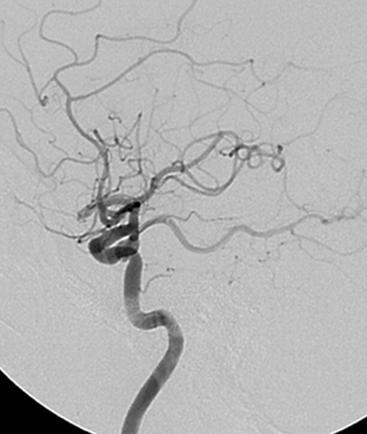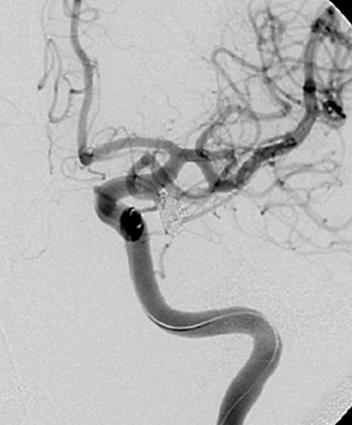
|
|
|
CASE REPORT / CAS CLINIQUE
RUPTURED OF A POSTERIOR COMMUNICATING CEREBRAL ARTERY ANEURYSM PRESENTED WITH A BILATERAL ACUTE SUBDURAL HEMATOMA: A CASE REPORT AND REVIEW OF THE LITERATURE
RUPTURE D'UN ANEVRISME DE L'ARTERE COMMUNICANTE POSTERIEURE REVELE PAR UN HEMATOME SOUS DURAL
E-Mail Contact - BOUJEMAA Hafedh :
hafedh_boujemaa@hotmail.fr
ABSTRACT Bilateral acute subdural hematoma is an uncommon presentation of the rupture of an intracranial aneurysm. We report one case of the rupture of posterior communicating cerebral artery aneurysm presented with bilateral acute subdural hematoma. Such a patient requires changes in routine preoperative management. Keywords: Bilateral subdural hematoma – aneurysm rupture INTRODUCTION Bilateral spontaneous acute subdural hematoma is an uncommon manifestation of the rupture of a cerebral aneurysm. Aneurysms of the internal carotid artery and middle cerebral artery are more commonly associated with the presentation of subdural hematoma (3, 8, 10). Bilateral acute subdural hematoma is very rare. We don’t find any same cases reported in the literature. We report one case of bihemispheric acute subdural hematomas secondary to the rupture of an left posterior communicating artery aneurysm. CASE REPORT A 44-year-old woman presented with a sudden consciousness during her job. The clinical exam was revealed a deep coma (GSC=5) and right anisocoria. DISCUSSION Although rupture of cerebral aneurysms usually results in subarahnoid hemorrhage (about 60%), intracerebral hematoma is often seen in 30-40% and intraventricular hematoma in 12-17% (1, 3, 4, 6). The incidence of spontaneous acute subdural hematoma due to aneurysm rupture varies from 0.5 % to 7.9% (3, 4, 6, 8). In our case we were perplexed whether this bleeding was spontaneous or secondary to the rupture of aneurysm, and we could not deny the possibility of the ruptured aneurysm, because of the bilateral of the bleeding. These lesions are usually unilateral, bilateral hematoma is very rare. We discuss the relationships of aneurysm and subdural hematoma. Different mechanisms have been proposed to explain the causation of acute subdural hematoma after the rupture of aneurysm: Acute subdural hematoma had been described in association with aneurysms at almost all the branches of intracranial arteries. Fox analyzed the world literature and found 56 reports containing 146 cases of subdural hematoma there were published between 1895 and 1978. The commonest aneurysm associated with subdural hematoma is internal carotid artery aneurysm, followed by middle cerebral artery aneurysm. About 80% of the cases of subdural hematoma due to the rupture of cerebral aneurysm reported in the literature were seen in females. CONCLUSION An acute subdural hematoma in the absence of head trauma requires further neuro-radiological investigation to define its possible cause. If the patient is stable enough to allow further investigations before craniotomy, then angiographic study to define the vascular lesion must be considered. However, in the face of rapid clinical deterioration, an emergency craniotomy for subdural evacuation should be performed before further investigations (6, 12).  Figure 1
 Figure 3  Figure 4 REFERENCES
|
© 2002-2018 African Journal of Neurological Sciences.
All rights reserved. Terms of use.
Tous droits réservés. Termes d'Utilisation.
ISSN: 1992-2647
